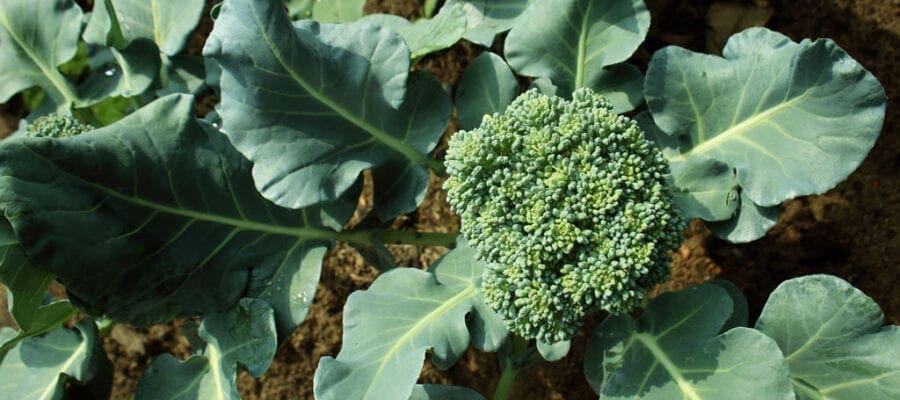Broccoli is a highly nutritious vegetable that is a must for the veg patch. You will really notice the difference in flavour of your own grown broccoli and, being so fresh, it will contain even more vitamins and health giving properties.
It belongs to the brassica family and there are three types: white and purple sprouting broccoli which are harvested in late winter through to spring, and calabrese which is harvested in late summer to autumn and produces one main head and then some smaller florets.
Broccoli isn’t difficult to grow, but a bit of extra care is needed in the early stages of a young plant’s life. Once the plant is mature this crop is simple to care for and a small row of sprouting broccoli plants will keep a family going in tasty florets during winter and into spring.
Broccoli likes a sunny spot and good rich soil. Prepare the ground by digging over and adding some garden compost if you have it or sprinkle with some Growmore or chicken manure pellets.
Brassicas like a nice firm soil to be planted in, so after digging and raking, walk over the surface to firm it well before planting. Once the crop matures some of the plants may need some support as they can be top heavy.
Broccoli growing calendar

Broccoli Varieties
- ‘Bordeaux’
A unique purple variety not requiring cold weather to initiate flowerheads so can be harvested as early as July if sown in February. - ‘Extra Early Rudolph’
Very early purple-sprouting variety producing broccoli spears from January. - Calabrese ‘Marathon’
A popular summer/autumn variety. - ‘Early Purple Sprouting’
Hardy variety. Producing spears from February to May. - ‘Early White Sprouting’
Tall white spears with ‘cauliflower-like’ heads from February. - ‘Claret’
Large purple heads, thick stems. Late harvest from March/April.

Sowing & Growing Broccoli
Broccoli seeds can be sown in pots or seed trays or straight into the soil in a seed bed (a small area of soil that has been dug and raked). The seed is sown about 13mm (1⁄2in) deep and 13mm (1⁄2in) apart.
When the seedlings come through remove some to leave the remaining seedlings about 2.5cm (1in) apart. Allow to grow on and remove a few again once they get overcrowded. When about 4-5cm (11⁄2-2in) they can be lifted and then planted properly at spacings of 60cm (2ft) apart.
Try to keep as much soil on the roots as possible when transplanting. When making a hole for planting pour in plenty of water as you drop in the roots. Firm the compost well around the young plant. Try to plant deep so the bottom leaves are just above the soil surface.
If starting the seed off in pots or seed trays first use a multi-purpose compost or a John Innes seed or no 1 compost.
Cell trays are ideal to use because you can sow one or two seeds per cell and then just allow one plant to grow on in each. When you come to transplant the seedlings there is much less root disturbance.
Growing on broccoli
Once the plants get to about 10-13cm (4-5in) high they can be planted out in the veg patch. Unfortunately there are a lot of pests that can devastate brassica crops. Pigeons are a real problem so it is best to cover young plants with some netting or preferably special fine mesh that you can get from the garden centre or by mail order.
Enviromesh is one trade name for such material. This mesh can stop other pests such as cabbage white butterflies from laying their eggs. Another pest to watch out for is flea beetles, which make small holes in the leaves. Tiny plants can be completely eaten. Also whitefly and aphids (greenfly) are a problem.
The best care you can give young broccoli plants is to walk the row every day quickly checking the leaves and squashing any clusters of yellow eggs of the cabbage white butterfly or spraying the leaves with jets of water to remove whiteflies.
Once the cooler weather of autumn arrives, there are fewer pests about. Some broccoli can be a bit top heavy so it is worth staking the plants as soon as they get large enough to tie to a cane or wooden stake.
Harvesting broccoli
When broccoli starts to produce its florets it is ready to harvest. Occasionally one main head (similar to calabrese) will form and this should be picked so smaller sideshoots and flowers will then form.
Scrumptious recipes for your homegrown broccoli
More on broccoli
More grow guides
For more growing tips and guides, you should subscribe to Kitchen Garden – you’ll receive free seeds with every single issue too!











